Install Procedure
Getting Started
After a few seconds, the installation program is launched.
If the installation program does not launch automatically:
- Click the Start button on the Windows task bar, and then click Run.
- Browse to the installation disc drive, select Setup.exe, click Open, then click OK.
NOTES
- If you are installing on Windows Server Core editions, mount to Software Installation Disc through command line, go to the AMD64 folder and run Setup.exe.

NOTES
- The options that appear on this screen depend on the computer in which the software is being installed.
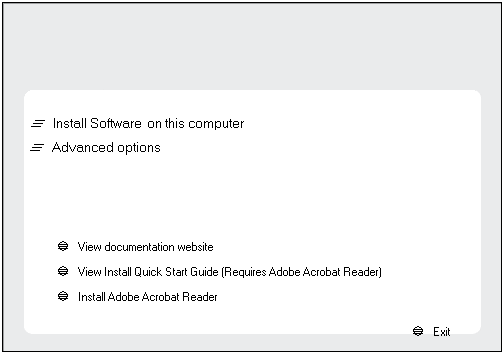
Click Next to continue.
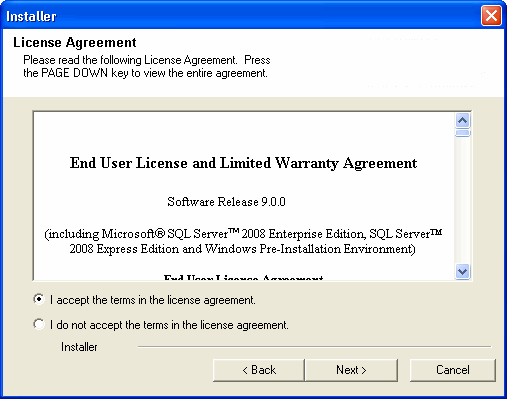
Cluster Selection
If you are installing in clustered environment, follow the steps below. For non-clustered environment, skip to Select Components for Installation.
Click Next to continue.
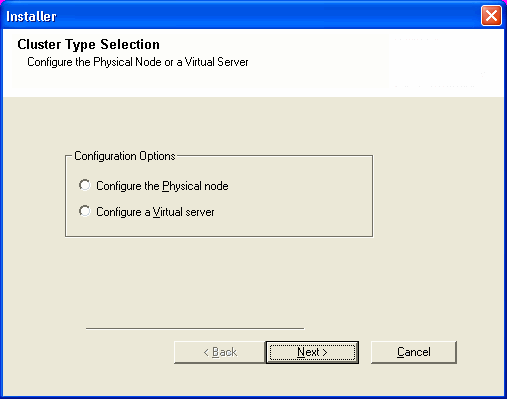
Click Next to continue.
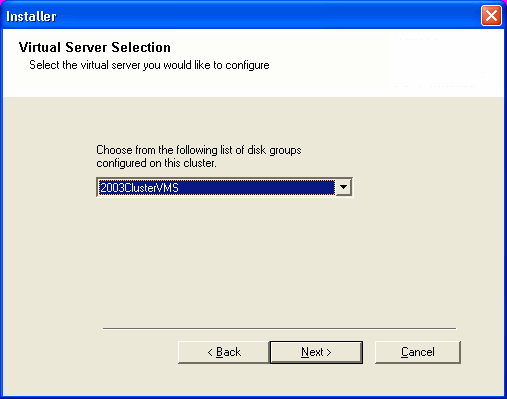
Select Components for Installation
NOTES
- Your screen may look different from the example shown.
- Components that either have already been installed, or which cannot be installed, will be dimmed. Hover over the component for additional details.
- If you wish to install the agent software for restore only, select Install Agents for Restore Only checkbox. See Installing Restore Only Agents for more information.
- The Special Registry Keys In Use field will be highlighted when GalaxyInstallerFlags registry key is enabled. Move the mouse pointer over this field to see a list of registry keys that have been created in this computer.
Click Next to continue.
To install the CommNet SNMP Enabler, expand the following Common Technology Engine folder, CommServe Modules and CommNet folder. Then select the following:
- CommNet SNMP Enabler

Configuration of Other Installation Options
For firewall options and configuration instructions, see Firewall Configuration and continue with the installation.
If firewall configuration is not required, click Next to continue.
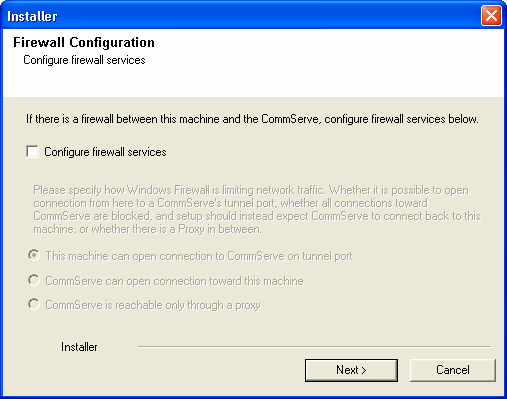
NOTES
- The CommServe client name is the name of the computer. This field is automatically populated.
- Do not use space and the following characters when specifying a new
name for the CommServe Host Name:
\|`~!@#$%^&*()+=<>/?,[]{}:;'"
- If a computer has already been installed, this screen will not be displayed; instead the installer will use the same Server Name as previously specified.
- If you do not specify the CommServe Host Name, a window will be prompted to continue in decouple mode. Click Yes to continue to Decoupled Install. Click No to specify a CommServe Name and continue with the installation.
Click Next to continue.
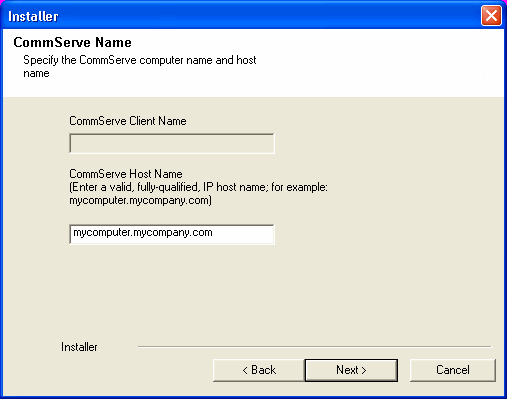
NOTES:
- If Windows Firewall is enabled on the computer, this option is selected by default and must be enabled to proceed with the installation.
- If Windows Firewall is disabled on the computer, you can select
this option to add the programs and services to enabled CommCell
operations across the firewall, if the firewall is enabled at a
later time.
You can either select this option during install or add the programs and services after installation. For adding the programs and services after installation, see Configure Windows Firewall to Allow CommCell Communication.
Click Next to continue.
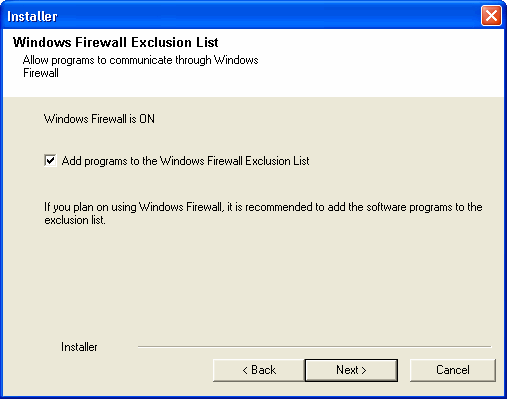
SNMP Trap Configuration
- Type a name for the group of computers to receive SNMP traps in the Community name pane.
- Click Add to list to add the name of the community to the drop down menu.
- Click Add to add destination computer(s) that will receive SNMP traps.
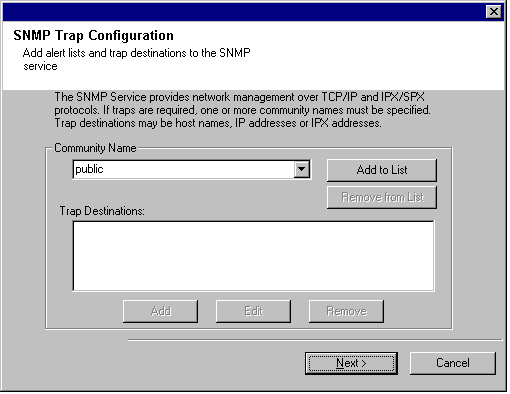
Verify Summary of Install Options
NOTES
- The Summary on your screen should reflect the components you selected for install, and may look different from the example shown.
Click Next to continue or Back to change any of the options.
The install program now starts copying the software to the computer. This step may take several minutes to complete.

Install Remaining Cluster Nodes
To complete the install for this node only, click No.

NOTES
- The list of Preferred Nodes displays all the nodes found in the cluster; from this list you should only select cluster nodes configured to host this cluster group server.
- Do not select nodes that already have multiple instances installed. For more information, see Multi Instancing.
When you have completed your selections, click Next to continue.
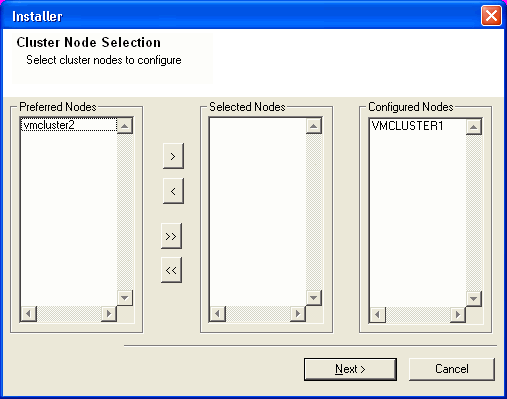
Click Next to continue.
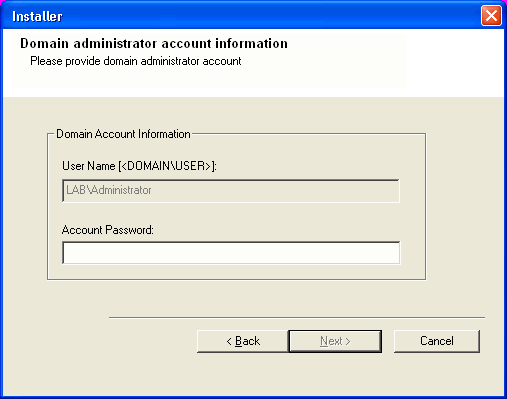
Click Stop to prevent installation to any nodes after the current ones complete.
Click Advanced Settings to specify any of the following:
- Maximum number of nodes on which Setup can run simultaneously.
- Time allocated for Setup to begin executing on each node, after which the install attempt will fail.
- Time allocated for Setup to complete on each node, after which the install attempt will fail.
NOTES
- If, during the remote install of a cluster node, setup fails to complete or is interrupted, you must perform a local install on that node. When you do, the install begins from where it left off, or from the beginning if necessary. For procedures, see Manually Installing the Software on a Passive Node.
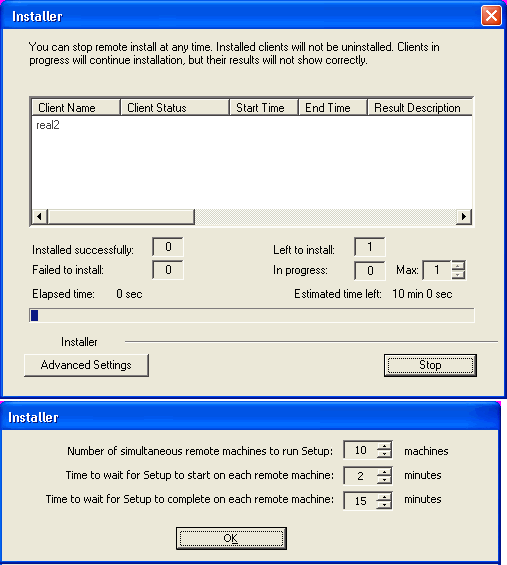
NOTES
- If any node installation fails, you must manually install the software on that node once the current installation is complete. (See Manually Installing the Software on a Passive Node for step-by-step instructions.)
- The message displayed on your screen will reflect the status of the selected nodes, and may look different from the example.
Click Next to continue.
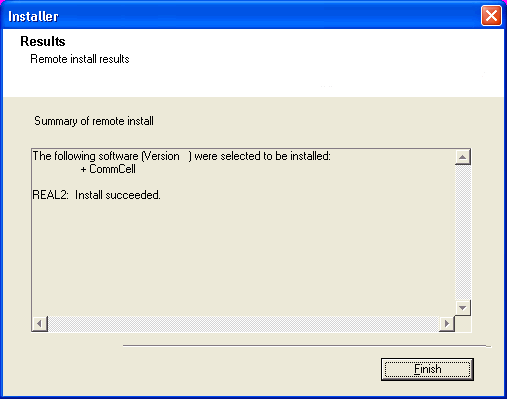
Setup Complete
NOTES
- The Setup Complete message displayed on your screen will reflect the components you installed, and may look different from the example shown.
- If Reboot Now button is displayed make sure to reboot the computer before performing any other operations from the computer.
Click Finish to close the install program.
The installation is now complete.
